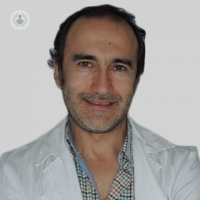Diabetic foot:What is and how to treat it ?
Written by:The diabetic foot is a clinical picture associated with diabetes, in which a mixture of neuropathy ( nerve affectation ) and arteriopathy ( affectation of the arteries) produces changes in the anatomy of the foot and subsequently wound in it that with a poor outcome may end in amputation of a toe, foot or leg.

Factors influencing its appearance
diabetic patients with poor glycemic control have more willingness to suffer it, but sometimes, it can occur in patients with apparently good control of their disease.
The initial appearance of nerve damage in the form of sensory neuropathy ( starting with a decrease of sensation in the feet) makes it appear anatomical deformity of the base of the toes and forefoot, and this, in turn, makes change the support points of the foot, resulting in appearance of ulcerated areas by“bad footstep”.
If we add to this situation worsening of blood supply to the foot and infection have the diabetic foot ulcer, which is the point where many of them end and jeopardizes their future viability.
Diagnostics
The first step in diagnosing the diabetic foot is to detect the insensitivity of the feet and the alteration of its shape.
Second, and very important in these patients exploration of the pulses in these patients reveal whether patients are at risk for diabetic foot.
When injuries occur and it is a stage that requires aggressive treatment.
Treatment
If there are no injuries and arterial circulatory defect is fundamental to procedures send more blood to the foot, such as angioplasties, stents, bypass… If there is also an infection, we can treat it with intense aggressive antibiotic or surgical cleanings.
Prevention
The most useful for the prevention of diabetic foot is out good control of diabetes to avoid the appearance of neuropathy.
If the pathology already exists, you can download templates, wear very comfortable shoes and avoid walking barefoot to not do a small wound.
All measurements are useful to avoid the appearance of this entity often so catastrophic results.


